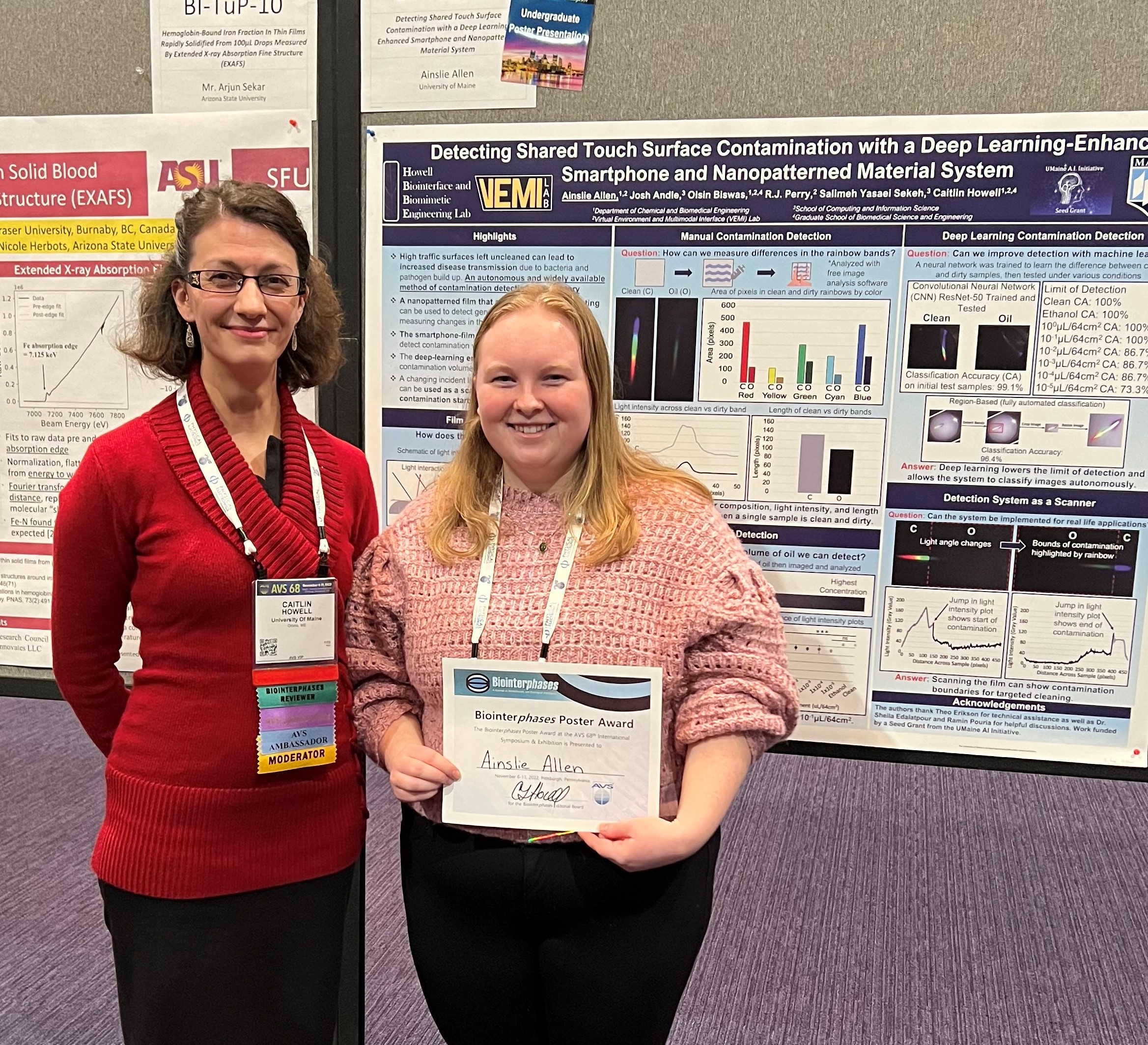
UMSS23 Student Profile: Ainslie Allen
While looking for a job on campus during her freshman year, Ainslie Allen happened to listen to a presentation given by Dr. Caitlin Howell and the rest, as they say, is history. Allen has been working in Dr. Howell’s lab ever since and has “enjoyed every minute of it.” Allen says “working with Dr. Howell has been absolutely amazing. She has taught me so much over the last two years that I never would have learned in class.” Allen credits working with her faculty mentor with her knowledge of basic experiment design, technical writing and presentation. “She has provided me with countless opportunities that not only typical students don’t get, but that typical undergraduate researchers also don’t get, and that’s all thanks to her mentorship.”
Allen has two major pieces of advice for other students considering involvement in research. “The only way you’re going to enjoy doing research is if you like your research advisor and if you like your project.” Allen says having a good relationship with your research advisor encourages you to work hard and make your advisor proud. She also says that liking and having interest in your research project means you won’t mind putting in the work to see the project through. “If you’ve got those two things, it’s going to feel like everything else just falls into place, and you’re going to feel much more confident about your own plans after graduating,” says Allen.
As for Allen’s current project within Dr. Howell’s lab, their research is particularly timely, given recent happenings across the globe during the past three years. Their research is focused on “limiting disease transmission via high traffic surfaces.” They are studying the cleanliness of surfaces using a Maine-made nanopatterned material and pairing that with a smartphone and machine learning system. The nanopatterned material creates a rainbow on the surface, which changes depending on whether a contaminant is present. Using a machine learning algorithm, they can measure those changes and integrate them into a smartphone application, which can be used by the general public. The app will give users “the power to determine whether a surface coated in the nanopatterned material is clean or dirty in a quick, cheap, and easily accessible manner. In this way, we will help ensure high traffic surfaces stay clean and disease-free, keeping our community safe.”
